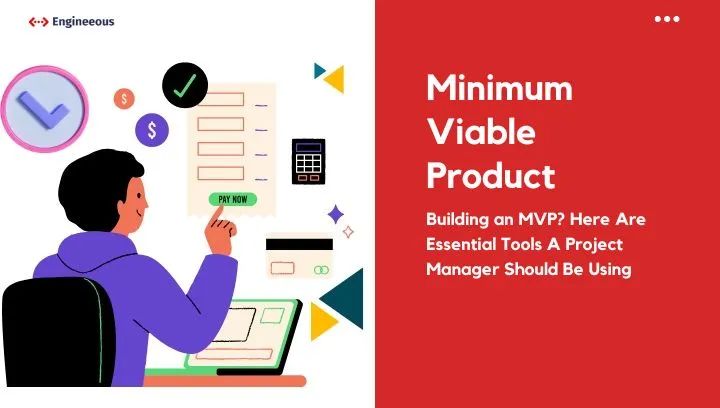Introduction
Building a Minimum Viable Product (MVP) is a crucial step in the development of a new product or service. The MVP allows businesses to test their ideas, gather valuable feedback from early users, and validate their assumptions before committing extensive resources. To successfully manage the development of an MVP, a competent project manager must leverage various tools to streamline processes, foster collaboration, and ensure the project's success. In this article, we will explore some essential tools that a project manager should be using when building an MVP.
Project Management and Collaboration Tools
Project management and collaboration tools are software solutions designed to facilitate and streamline the planning, execution, and monitoring of projects, as well as enhance collaboration among team members. These tools offer a centralized platform where project managers and team members can communicate, assign tasks, track progress, share files, and manage project-related activities efficiently. The need for such tools arises from the complexities and challenges involved in managing modern projects, which often involve multiple stakeholders, dispersed teams, and intricate workflows.
There are numerous project management and collaboration tools available, each with its unique features and capabilities. Here are some popular:
- Trello: Trello is an intuitive project management tool that enables project managers to create boards, lists, and cards to organize tasks and workflows. By using Trello, project managers can easily assign tasks to team members, track progress, and visualize the entire development process in a clear and transparent manner.
- Asana: Asana is another popular project management tool that offers a wide range of features for task management, team collaboration, and project tracking. With its user-friendly interface and customizable options, Asana helps project managers keep the team aligned and focused on delivering the MVP.
Communication and Team Collaboration Tools
Communication tools are essential components of modern business and collaboration, providing efficient and seamless ways for individuals and teams to connect, exchange information, and collaborate in real-time. These tools encompass a wide range of applications, from instant messaging platforms and video conferencing software to email clients and team collaboration hubs. By leveraging these communication tools, organizations can break down geographical barriers, enhance productivity, foster teamwork, and ensure smooth information flow within their workforce, leading to improved decision-making and overall operational efficiency.
- Slack: Communication is a key aspect of any project, and Slack provides an ideal platform for real-time messaging and team collaboration. Project managers can create dedicated channels for different topics, teams, or specific milestones, enabling seamless communication and reducing email clutter.
- Microsoft Teams: For teams that rely heavily on Microsoft's suite of applications, Microsoft Teams offers an integrated solution for communication, file sharing, and video conferencing. It ensures efficient collaboration within the team and can be seamlessly integrated with other Microsoft tools.
Version Control and Code Collaboration Tools
Version control tools are indispensable resources in software development and collaborative projects, enabling teams to manage changes to their code, documents, and other files systematically. These tools maintain a historical record of modifications, facilitating easy identification of who made specific changes and when. With version control, developers can work on different branches simultaneously, merge changes seamlessly, and roll back to previous versions if needed. By providing a centralized repository and streamlined collaboration, version control tools promote efficient teamwork, reduce the risk of conflicts, and ensure the integrity and stability of projects throughout their development lifecycle.
- GitHub: GitHub is a widely used version control platform that allows developers to collaborate on code, manage branches, and track changes effectively. Project managers can monitor development progress, review code changes, and ensure smooth collaboration between developers.
- Bitbucket: Similar to GitHub, Bitbucket is a version control repository that offers code collaboration capabilities. It provides a secure environment for storing code and managing access rights, making it a suitable choice for projects requiring higher privacy levels.
Prototyping and Design Tools
Prototyping and design tools are fundamental instruments in the creative process of building digital products and user experiences. These tools empower designers and product teams to translate ideas into tangible prototypes, mockups, and wireframes that showcase the visual and interactive aspects of their concepts. By enabling rapid iteration and testing, these tools help refine designs, gather user feedback, and validate assumptions before investing significant resources in development. With intuitive interfaces and a plethora of features, prototyping and design tools play a pivotal role in fostering collaboration, streamlining workflows, and ultimately delivering user-centric, visually appealing, and functional digital solutions.
- Sketch: Sketch is a powerful design tool used for creating prototypes, wireframes, and high-fidelity designs. Project managers can use Sketch to collaborate with designers, review design iterations, and visualize the product's user interface.
- Figma: Figma is a cloud-based design and prototyping tool that facilitates real-time collaboration between designers and stakeholders. Project managers can comment on designs, validate interactions, and involve the team in the design process.
Analytics and User Feedback Tools
Analytics and user feedback tools are invaluable assets for businesses seeking data-driven insights into user behavior and preferences. Analytics tools, such as Google Analytics, provide comprehensive data on website traffic, user engagement, and conversion rates, enabling businesses to gauge the effectiveness of their online presence and marketing efforts. On the other hand, user feedback tools, like surveys, feedback forms, and user testing platforms, allow organizations to directly gather valuable input from their audience. Combining the power of analytics and user feedback helps companies make informed decisions, identify pain points, and refine their products or services to better meet customer needs, ultimately driving business growth and fostering a deeper understanding of their target audience.
- Google Analytics: To gain valuable insights into user behavior and engagement with the MVP, project managers should implement Google Analytics. It provides detailed data on user interactions, page views, and conversion rates, enabling data-driven decision-making.
- Hotjar: Hotjar is a user feedback and behavior analytics tool that records user sessions, gathers feedback through surveys, and creates heatmaps. This tool empowers project managers to understand user pain points and make informed improvements to the MVP.
Conclusion
Building an MVP requires careful planning, effective communication, and collaboration between various stakeholders. By utilizing the right set of tools, project managers can streamline workflows, foster efficient team collaboration, and gather crucial data to make informed decisions during the MVP development phase. The tools mentioned in this article are just a few examples of the vast array of resources available to project managers. Selecting the right tools based on the project's specific needs and team dynamics is crucial for achieving success in building a successful MVP.




